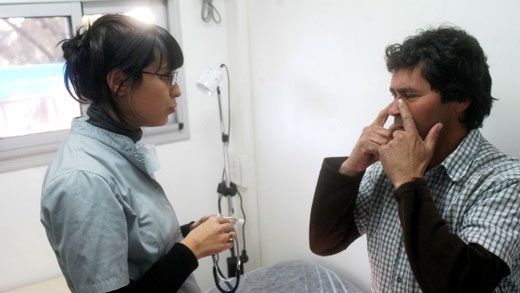Challenge
In April 2009, the A/H1N1 influenza virus spread rapidly around the world. In Argentina, as the virus circulated through the country, the contagion reached its peak at the end of June. By December, the number of deaths had reached 613. The number of cases of influenza-like illness reported during 2009 was much higher than during previous epidemics. Children under five and adults between 45 and 64 years were the most seriously affected. In response to the overwhelming increase in demand for services, the country’s health system became over extended. This resulted in an excess burden on emergency and hospitalization sectors. In addition, the pandemic generated significant economic losses from work and school absenteeism, and observed declines in tourism, purchases in commercial centers, and tickets for sporting and cultural events.
Solution
The World Bank-financed Emergency Project for the Prevention and Management of Influenza-Type Illness and Strengthening of Argentina’s Epidemiological System was formulated with the objective of controlling the second wave of the A/H1N1 influenza pandemic and strengthening the Argentine health system’s capacity to respond to potential epidemiological outbreaks. The project complemented the Bank’s earlier immediate response to the first A/H1N1 outbreak with US$ 7.5 million from the emergency component of the Provincial Maternal-Child Health Investment Project.
The emergency generated by the pandemic deepened the provinces’ commitment to promote the use of quality health information for decision making. The project contributed to the development of capacities at the national and provincial levels in public health policy implementation. The project helped Argentina prepare for the second wave of A/H1N1 by supporting the strengthening of the surveillance system at the central and provincial levels, the application of the necessary vaccines, provision of antiviral medication, and prevention communication campaigns. The project‘s adoption of a results-based financing mechanism provided incentives to the provincial governments to improve health outcomes by linking financing to results.
Results
The project transformed the crisis into an opportunity with strategic and operational improvements in the monitoring and control of the A/H1N1 influenza epidemic. It also contributed significantly to improvements in public health. Some of the concrete results are:
- In December 2013, 36 situation rooms could generate health information at the provincial and departmental level in a systemic and timely manner.
- The project supported the development of local communication campaigns that increased public influenza awareness, encouraged prevention through vaccination, and promoted self-care against the transmission of infectious diseases, by focusing on prevention measures for respiratory diseases, and promotion of early doctor visits.
- The project supported the successful implementation of a massive anti-flu and anti-pneumococcal vaccination. At the end of the 2010 campaign, no deaths from H1N1 were reported within the prioritized at-risk groups; during 2011 no deaths from the H1N1 virus were reported from any groups
- The country’s laboratory surveillance system has actively monitored respiratory viruses since 2008. Argentina currently contributes the greatest volume of information on respiratory viruses to the CDC for the development of the southern hemisphere influenza vaccine in the region.
Bank Group Contribution
The Bank provided a loan of US$ 229 million. The project helped to strengthen the epidemiological surveillance system through the funding of interdisciplinary technical teams, training, technical assistance, purchase and distribution of computer equipment, publications and communications campaigns for prevention and self-care. While the Government of Argentina funded the purchase and distribution of vaccines and antivirals, the project helped to create the necessary synergies between different levels of government to address the pandemic and outline intervention strategies in the long term.
Partners
Project implementation was executed through the different technical units within the National Ministry of Health (Ministerio de Salud de la Nación), representing a new modus-operandi, which served to build up in-house capabilities and fostered greater cooperation among different health units.
Moving Forward
The sustainability and institutionalization of the health situation rooms in the provinces will depend on their continued use and transformation into strategic tools for the management of health decisions. The inclusion of the A/H1N1 vaccine for high-risk groups and pneumococcal vaccine for children into the National Vaccine Calendar schedule is expected to reduce the likelihood of a new A/H1N1 influenza epidemic and reduce pneumococcus in children.
Beneficiaries
Before the A/H1N1 epidemic, the City of Santa Fe’s health situation room had not developed the capacity to integrate and provide information to support a health management strategy. With project support, the situation room began the systematic analysis of health-related information. Municipal Mayor Ana Maria Meiners said, "Our Health Room will be alive and all of the city institutions can provide useful data to start working on our problems. It will be a valuable meeting point where different stakeholders can provide available information. Let us begin creating mechanisms for data that we do not have yet,"
